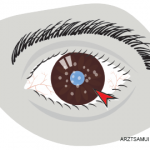
wavebreakmedia/shutterstock.com
Throughout their training and practice, physicians become adept at pattern recognition as a means to efficiently connect and synthesize seemingly disparate laboratory, physical exam, and radiologic and historical findings into a coherent theory for what likely ails the patient sitting in front of them. This inductive method of reasoning is necessary because, based on these conclusions, a physician will then choose from among a huge array of diagnostic tests to validate their clinical suspicions.
Frequently (and especially for inflammatory diseases), a panel of diagnostic tests will be required to evaluate each of the possible diagnoses being entertained. Judiciously pursuing the diagnostic workup helps minimize the risk of false-positive results that could lead to more invasive and risky testing and treatments.
The multi-organ inflammatory diseases evaluated and treated by rheumatologists and infectious disease doctors exemplify how challenging it can be to pursue a parsimonious diagnostic work-up. As a result, novel diagnostic testing strategies not only need to be more sensitive than existing tests, but they also need to more comprehensively query a patient sample for an array of possible etiologies to avoid missing diagnoses that may not fit existing diagnostic algorithms and clinical phenotypes.
Metagenomic deep sequencing (MDS) is an unbiased, hypothesis-free approach toward infectious disease diagnosis that leverages the remarkable efficiency of massively parallel sequencing technologies paired with concomitant advances in computational algorithms and processing speed that is required for the resulting large volumes of sequence data. As a consequence, it is now possible to sequence essentially all the nucleic acid in a given patient sample, filter out all the human sequences and then rapidly query large public databases to identify the source of the nonhuman sequences present in the sample.
Using this approach, one is able to look for essentially any type of pathogen (i.e., fungi, eukaryotes, DNA and RNA viruses, and bacteria) in a single test. Our group has previously shown that this technology can identify common and unusual infections in cerebrospinal fluid, blood, respiratory samples and stool from a wide range of species, including humans. In a recent study, we tested whether MDS was useful for identifying infections in the very small volumes of intraocular fluid obtained from patients with uveitis.
Uveitis
Less than 50% of all intraocular inflammatory diseases (e.g. uveitis) are associated with a systemic inflammatory disease, such as rheumatoid arthritis, vasculitis and inflammatory bowel disease. Numerous infectious causes of uveitis exist and can complicate diagnostic work-ups, especially if a patient has already been immunosuppressed for a systemic autoimmune disease. Specifically, it is sometimes unclear whether intraocular inflammation is a manifestation of a patient’s underlying condition or whether they have suffered an infectious complication as a result of their immunosuppressed state.


